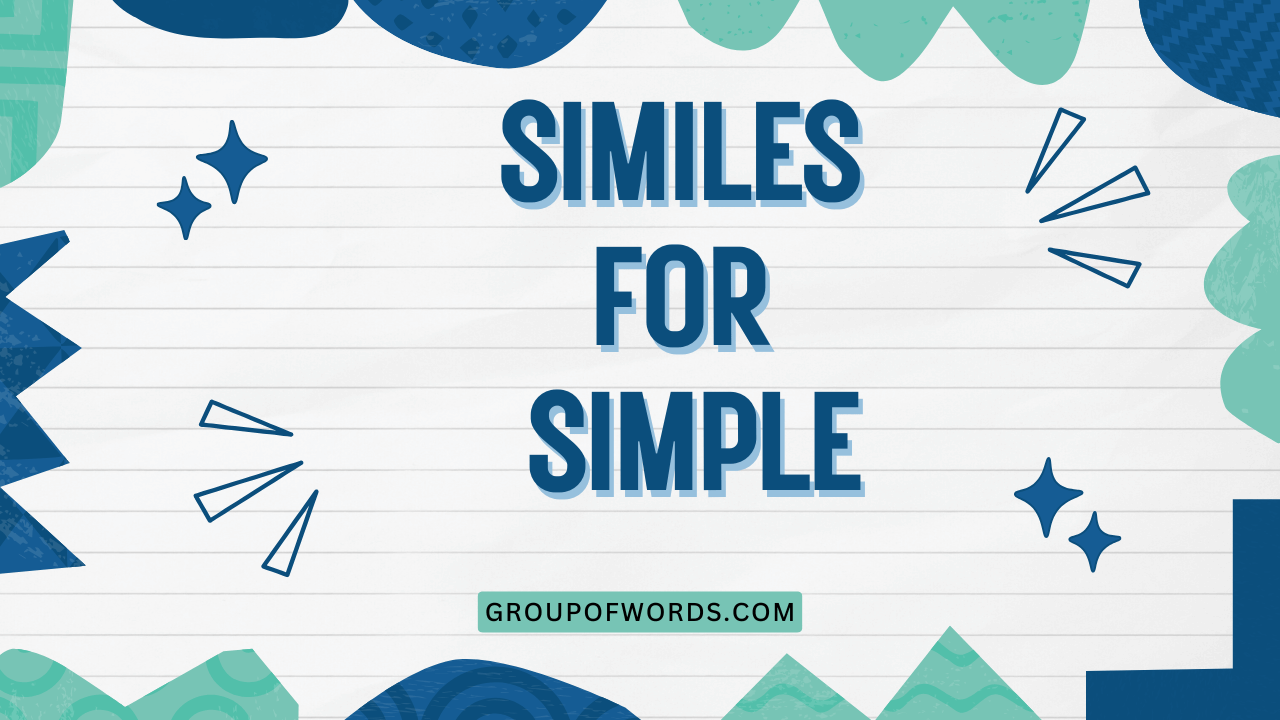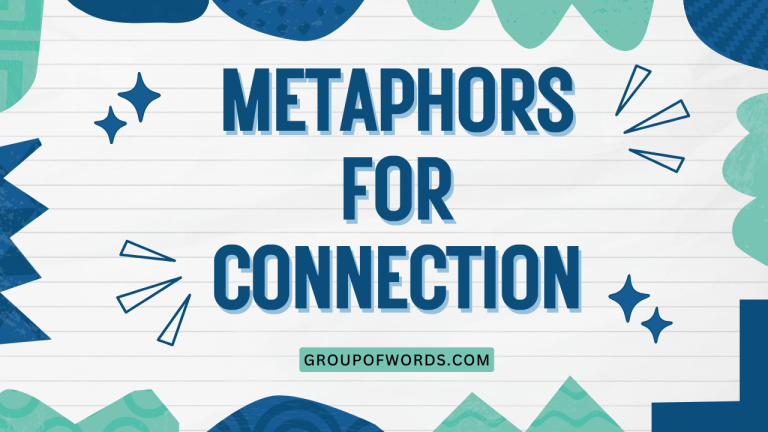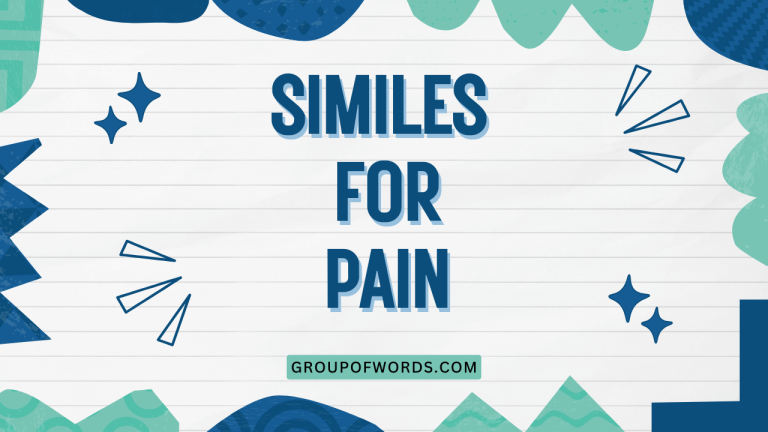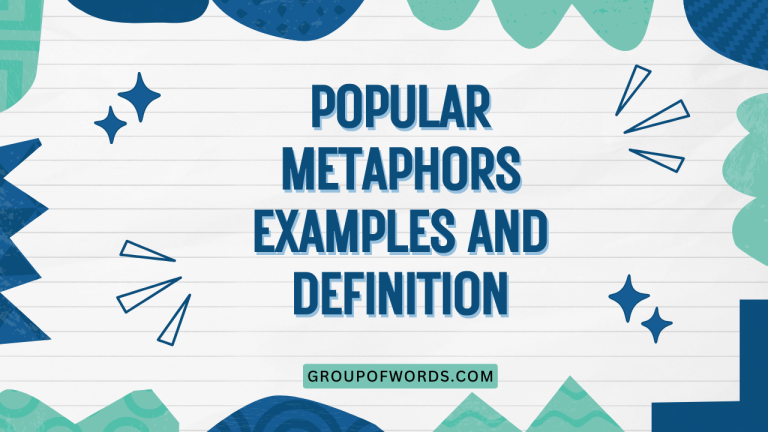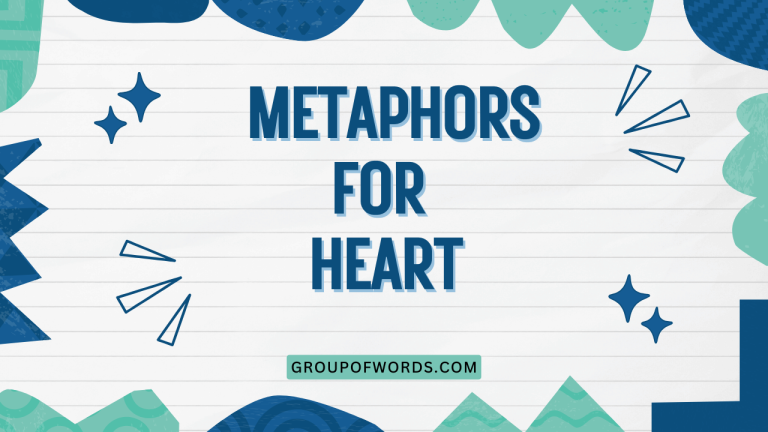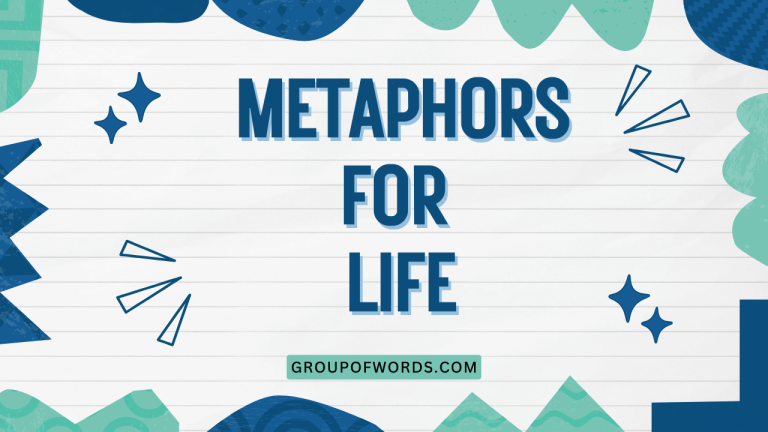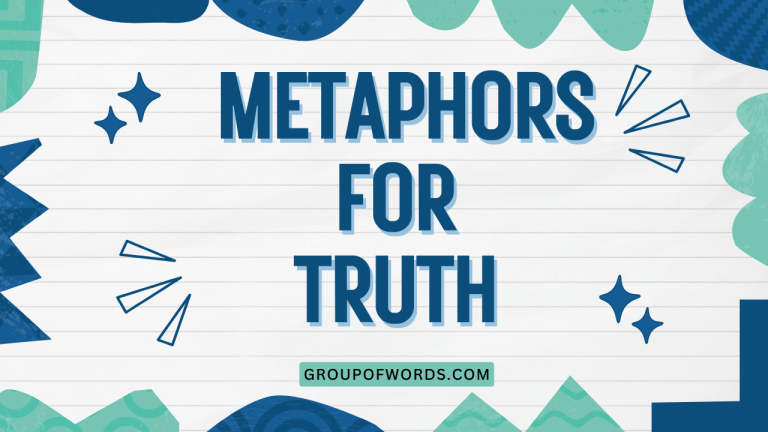Similes for Simple: A Comprehensive Guide to Figurative Language
Understanding similes is crucial for enhancing your descriptive writing and comprehension skills. Similes, a type of figurative language, allow you to draw comparisons between seemingly unrelated things, making your language more vivid and engaging.
This article provides an in-depth exploration of similes focusing on the concept of “simple,” offering numerous examples, usage rules, and practice exercises to help you master this essential aspect of English grammar. Whether you’re a student, writer, or language enthusiast, this guide will equip you with the knowledge and tools to effectively use similes in your communication.
Table of Contents
- Introduction
- Definition of Simile
- Structural Breakdown of Similes
- Types of Similes
- Examples of Similes for “Simple”
- Usage Rules for Similes
- Common Mistakes with Similes
- Practice Exercises
- Advanced Topics in Similes
- Frequently Asked Questions
- Conclusion
Definition of Simile
A simile is a figure of speech that directly compares two different things using the words “like” or “as.” The purpose of a simile is to enhance description, create vivid imagery, and make the comparison more understandable or relatable. Similes add depth and color to writing, allowing readers to connect with the text on a more emotional and sensory level. They are often used in literature, poetry, and everyday conversation to make language more engaging and expressive.
Similes are a subset of figurative language, which also includes metaphors, personification, and hyperbole. While similes make explicit comparisons using “like” or “as,” metaphors imply a comparison by stating that one thing *is* another.
Understanding the difference between these two figures of speech is crucial for effective communication.
In essence, a simile highlights the similarities between two distinct entities, enriching the reader’s understanding and appreciation of the subject matter. They can range from the mundane to the profound, depending on the desired effect and context of the writing.
Structural Breakdown of Similes
The basic structure of a simile consists of three key components: the subject, the connecting word (“like” or “as”), and the object of comparison. The subject is the thing being described, and the object of comparison is the thing it is being compared to. The connecting word establishes the comparison between the two.
For example, in the simile “The explanation was as simple as ABC,” the subject is “the explanation,” the connecting word is “as,” and the object of comparison is “ABC.” This structure clearly conveys that the explanation is being likened to something very basic and easy to understand.
Understanding this basic structure allows you to create effective and clear similes. By carefully choosing the subject and object of comparison, you can craft similes that are both descriptive and meaningful.
The choice of “like” or “as” is often interchangeable, although “as” can sometimes lend a more formal or emphatic tone.
Connecting Words: “Like” and “As”
The choice between “like” and “as” in a simile is often a matter of personal preference or stylistic choice. Both words serve the same function of connecting the subject to the object of comparison.
However, there are subtle nuances that can influence the choice. “As” is sometimes perceived as more formal or literary, while “like” is more common in everyday speech.
Consider these examples:
- “The solution was like a walk in the park.” (More informal)
- “The solution was as straightforward as possible.” (Slightly more formal)
In most cases, the two words can be used interchangeably without significantly altering the meaning of the simile. However, being aware of the subtle differences can help you fine-tune your writing and achieve the desired tone.
Types of Similes
While all similes share the same basic structure, they can be categorized based on the type of comparison they make or the effect they create. Some common types of similes include:
- Descriptive Similes: These similes aim to provide a vivid and detailed description of the subject.
- Explanatory Similes: These similes clarify or explain a complex concept by comparing it to something more familiar.
- Humorous Similes: These similes use humor to create a lighthearted or amusing comparison.
- Emphatic Similes: These similes emphasize a particular quality or characteristic of the subject.
Understanding these different types of similes can help you choose the most appropriate simile for a given context and achieve the desired effect in your writing.
Descriptive Similes
Descriptive similes are used to create a vivid and detailed image in the reader’s mind. They often appeal to the senses, providing sensory details that enhance the description.
For example, “The answer was as clear as a bell” uses the auditory image of a clear bell to describe the clarity of the answer.
Explanatory Similes
Explanatory similes are used to clarify or explain a complex concept by comparing it to something more familiar or understandable. For example, “The process was like assembling a simple puzzle” helps the reader understand the process by comparing it to the familiar task of assembling a puzzle.
Humorous Similes
Humorous similes are used to create a lighthearted or amusing comparison. They often rely on exaggeration or unexpected juxtapositions to generate humor.
For example, “Trying to explain it to him was like teaching a cat to play the piano” uses a humorous comparison to convey the difficulty of the task.
Emphatic Similes
Emphatic similes are used to emphasize a particular quality or characteristic of the subject. They often use strong or extreme comparisons to highlight the importance of the quality being described.
For example, “The solution was as simple as pie” emphasizes the extreme simplicity of the solution.
Examples of Similes for “Simple”
The concept of “simple” can be expressed through a variety of similes, each offering a slightly different nuance and perspective. Here are numerous examples categorized for clarity.
Similes Comparing Simplicity to Familiar Objects or Tasks
This table provides examples of similes that relate simplicity to everyday objects or tasks that are widely considered easy to understand or accomplish. These similes make the concept of “simple” more relatable and accessible.
| Simile | Explanation |
|---|---|
| As simple as ABC | Refers to the basic alphabet, implying ease of understanding. |
| As simple as pie | Implies that something is very easy to do or understand. |
| As simple as falling off a log | Suggests that something requires virtually no effort. |
| As simple as tying your shoes | Compares the task to a basic, everyday activity. |
| As simple as brushing your teeth | Highlights the routine and ease of the action. |
| As simple as boiling water | Emphasizes the straightforward nature of the task. |
| As simple as making a sandwich | Relates the simplicity to a common, uncomplicated meal. |
| As simple as reading a children’s book | Suggests the task is easily understood by anyone. |
| As simple as walking in the park | Implies a leisurely and effortless activity. |
| As simple as breathing | Highlights the natural and automatic nature of the process. |
| As simple as adding one and one | Emphasizes the basic mathematical concept. |
| As simple as day and night | Refers to a clear and obvious distinction. |
| As simple as black and white | Highlights the lack of ambiguity or complexity. |
| As simple as following a recipe | Suggests a clear and straightforward set of instructions. |
| As simple as connecting the dots | Implies that the solution is easily found with minimal effort. |
| As simple as turning on a light switch | Highlights the ease and immediacy of the action. |
| As simple as sending an email | Relates the simplicity to a modern, commonplace task. |
| As simple as making a phone call | Emphasizes the directness and ease of communication. |
| As simple as opening a door | Suggests a readily accessible and uncomplicated action. |
| As simple as planting a seed | Implies a basic and fundamental process. |
| As simple as using a spoon | Highlights the fundamental nature of the tool. |
| As simple as riding a bike (once you know how) | Emphasizes the simplicity after an initial learning phase. |
| As simple as knowing your name | Implies an intrinsic and undeniable understanding. |
| As simple as looking in a mirror | Highlights the direct and obvious nature of the reflection. |
Similes Comparing Simplicity to Clarity or Transparency
This table showcases similes that compare “simple” to concepts of clarity, transparency, and lack of obstruction. These similes emphasize the ease with which something can be understood or perceived.
| Simile | Explanation |
|---|---|
| As clear as crystal | Implies that something is easily seen or understood. |
| As clear as day | Suggests that something is obvious and easily apparent. |
| As clear as glass | Highlights the transparency and lack of ambiguity. |
| As clear as mud (ironic) | Used ironically to suggest something is *not* simple or clear. |
| As transparent as water | Emphasizes the lack of hidden information or complexity. |
| As straightforward as an arrow | Suggests a direct and uncomplicated path. |
| As plain as the nose on your face | Highlights something that is extremely obvious. |
| As easy to see through as cellophane | Implies a lack of deception or complexity. |
| As understandable as a well-written sign | Emphasizes the clarity and accessibility of the information. |
| As direct as a laser beam | Suggests a focused and uncomplicated approach. |
| As lucid as a dream (sometimes ironic) | Can be used ironically, but here implies clarity of thought. |
| As self-explanatory as a diagram | Highlights the ability to understand without further instruction. |
| As unambiguous as a stop sign | Emphasizes the lack of potential for misinterpretation. |
| As evident as the sun rising | Refers to a natural and undeniable occurrence. |
| As perceptible as a loud noise | Highlights the ease with which something can be noticed. |
| As distinct as a fingerprint | Suggests a clear and unique characteristic. |
| As legible as a printed page | Emphasizes the ease of reading and understanding. |
| As articulate as a well-spoken person | Highlights the clarity and precision of the communication. |
| As coherent as a well-structured argument | Suggests a logical and understandable flow of ideas. |
| As accessible as a public library | Emphasizes the ease of obtaining information. |
| As self-evident as gravity | Refers to a fundamental and undeniable principle. |
| As intuitive as using a smartphone (for some) | Highlights the ease of use for those familiar with the technology. |
| As recognizable as a famous landmark | Suggests immediate and easy identification. |
| As memorable as a catchy tune | Emphasizes the ease of recall. |
Similes Comparing Simplicity to Lack of Complexity
This table presents similes that equate “simple” with a lack of complexity, intricacy, or difficulty. These similes emphasize the absence of complicating factors.
| Simile | Explanation |
|---|---|
| As uncomplicated as possible | Emphasizes the absence of unnecessary complexities. |
| As streamlined as a modern design | Suggests efficiency and lack of extraneous elements. |
| As minimalist as a haiku | Highlights the reduction to essential elements. |
| As bare as a blank canvas | Implies the absence of any added features or details. |
| As unadorned as a simple wooden chair | Emphasizes the lack of embellishment or decoration. |
| As rudimentary as a basic tool | Suggests a focus on essential functionality. |
| As fundamental as the laws of physics | Highlights the underlying and essential nature. |
| As elementary as a first-grade lesson | Emphasizes the basic level of understanding required. |
| As monolithic as a single block of stone | Suggests a lack of division or complexity. |
| As unified as a single voice | Implies a lack of internal conflict or disunity. |
| As homogeneous as a single color | Emphasizes the lack of variation or diversity. |
| As isolated as a desert island | Suggests a lack of external influence or complication. |
| As contained as a single box | Highlights the limited scope and defined boundaries. |
| As singular as a unique event | Emphasizes the lack of repetition or duplication. |
| As isolated as a single data point | Highlights the lack of interconnectedness. |
| As self-contained as a terrarium | Suggests independence from external factors. |
| As direct as a straight line | Emphasizes efficiency and lack of detours. |
| As concise as a tweet | Highlights the brevity and lack of extraneous information. |
| As abbreviated as an initialism | Emphasizes the shortened and simplified form. |
| As succinct as a headline | Suggests conveying the essential information efficiently. |
| As stripped down as a race car | Highlights the removal of non-essential components. |
| As bare bones as a minimal budget | Emphasizes the lack of resources or extras. |
| As unadulterated as pure water | Suggests a lack of contamination or added substances. |
| As unmixed as a primary color | Highlights the purity and lack of combination. |
Usage Rules for Similes
While similes are relatively straightforward to use, there are some important rules to keep in mind to ensure clarity and effectiveness:
- Ensure a Clear Comparison: The comparison should be logical and easily understood by the reader. Avoid comparing things that have no apparent connection.
- Avoid Clichés: While some common similes are effective, overuse can make your writing seem unoriginal. Try to create fresh and unique comparisons.
- Maintain Consistency: The simile should be consistent with the tone and style of your writing. Avoid using overly informal similes in formal contexts.
- Consider the Audience: The effectiveness of a simile depends on the reader’s understanding of the object of comparison. Choose comparisons that are likely to be familiar to your audience.
By following these rules, you can use similes effectively to enhance your writing and communicate your ideas more clearly and engagingly.
Avoiding Clichés
A cliché is an overused expression that has lost its original impact and freshness. While some common similes are widely understood, overuse can make your writing seem uninspired and predictable. To avoid clichés, strive to create original and imaginative comparisons.
For example, instead of saying “as busy as a bee,” you could say “as busy as a one-armed paper hanger” (though be mindful of potentially offensive connotations). The key is to find a comparison that is both descriptive and unique.
Maintaining Consistency
The simile you choose should be consistent with the overall tone and style of your writing. Using an overly informal or slang-filled simile in a formal academic paper, for example, would be inappropriate and detract from the credibility of your writing.
Consider the context and audience when selecting your similes.
Common Mistakes with Similes
Even experienced writers can make mistakes when using similes. Some common errors include:
- Using Incorrect Connecting Words: Confusing “like” and “as” with other words.
- Creating Illogical Comparisons: Comparing things that have no clear connection.
- Overusing Similes: Using too many similes in a single piece of writing.
- Misunderstanding the Meaning of the Object of Comparison: Using a comparison that the reader is unlikely to understand.
By being aware of these common mistakes, you can avoid them and use similes more effectively in your writing.
Here’s a table illustrating some common mistakes with similes and how to correct them:
| Incorrect | Correct | Explanation |
|---|---|---|
| The solution was simple than pie. | The solution was simpler than pie. | Incorrect use of comparative adjective. While not a simile mistake directly, it often accompanies simile use. |
| He ran as fast the wind. | He ran as fast as the wind. | Missing “as” to complete the comparison. |
| The explanation was like a purple elephant. | The explanation was like a child’s drawing. | Illogical comparison (unless the context justifies it). |
| The instructions were simple, like, easy to follow. | The instructions were as simple as they were easy to follow. | Redundant and awkward phrasing. |
| She was as happy like a clam. | She was as happy as a clam. | Incorrect connecting word (“like” instead of “as”). |
Practice Exercises
Test your understanding of similes with these practice exercises. Each exercise focuses on a different aspect of simile usage.
Exercise 1: Identifying Similes
Identify the similes in the following sentences:
- The instructions were as clear as day.
- He fought like a lion.
- Her smile was like sunshine.
- The problem was as simple as ABC.
- The water was as clear as crystal.
- The child slept like a log.
- The task was as easy as pie.
- The explanation was as plain as the nose on your face.
- The solution was as straightforward as an arrow.
- The room was as cold as ice.
Answers:
- The instructions were as clear as day.
- He fought like a lion.
- Her smile was like sunshine.
- The problem was as simple as ABC.
- The water was as clear as crystal.
- The child slept like a log.
- The task was as easy as pie.
- The explanation was as plain as the nose on your face.
- The solution was as straightforward as an arrow.
- The room was as cold as ice.
Exercise 2: Completing Similes
Complete the following similes using your own words:
- As simple as __________.
- Like a __________.
- As clear as __________.
- As easy as __________.
- Like __________.
- As straightforward as __________.
- As plain as __________.
- Like a __________.
- As simple as __________.
- As clear as __________.
Possible Answers:
- As simple as counting to ten.
- Like a walk in the park.
- As clear as a mountain spring.
- As easy as falling off a log.
- Like taking candy from a baby.
- As straightforward as a direct flight.
- As plain as black and white.
- Like a well-oiled machine.
- As simple as breathing.
- As clear as a well-written instruction manual.
Exercise 3: Creating Similes
Create your own similes to describe the following concepts:
- The concept of simplicity
- A clear explanation
- An easy task
- A straightforward solution
- A plain and obvious fact
- A simple instruction
- An uncomplicated process
- An understandable concept
- An accessible idea
- A basic principle
Possible Answers:
- The concept of simplicity is as refreshing as a cool breeze on a hot day.
- A clear explanation is like a well-lit path through a dark forest.
- An easy task is as effortless as floating on water.
- A straightforward solution is as direct as a straight line.
- A plain and obvious fact is as undeniable as the sun rising in the east.
- A simple instruction is like a roadmap to a known destination.
- An uncomplicated process is as smooth as gliding on ice.
- An understandable concept is as transparent as a clear pane of glass.
- An accessible idea is like an open door to a welcoming room.
- A basic principle is as fundamental as the foundation of a building.
Advanced Topics in Similes
For advanced learners, exploring more complex aspects of similes can further enhance their writing skills. These advanced topics include:
- Extended Similes: Developing a simile over multiple sentences or paragraphs.
- Implied Similes: Suggesting a comparison without explicitly using “like” or “as.”
- Subverted Similes: Using similes in unexpected or ironic ways.
- Cultural Context: Understanding how cultural background influences the interpretation of similes.
Mastering these advanced techniques can elevate your writing to a higher level of sophistication and nuance.
Extended Similes
An extended simile develops a comparison over multiple sentences or even paragraphs, allowing for a more detailed and nuanced exploration of the relationship between the subject and the object of comparison. This technique can create a richer and more immersive reading experience.
For example, instead of simply saying “The problem was as complex as a maze,” an extended simile might elaborate: “The problem was like a maze, with twisting corridors of logic and dead ends of frustration. Each attempt to find a solution led only to more confusion, and the path to success seemed to vanish with every turn.”
Implied Similes
An implied simile suggests a comparison without explicitly using the words “like” or “as.” This technique requires the reader to infer the comparison based on the context and imagery of the writing. Implied similes can be more subtle and sophisticated than direct similes.
For example, instead of saying “He roared like a lion,” you could say “His roar shook the room,” implying the comparison to a lion’s roar through the use of the word “roar” and the image of shaking the room.
Subverted Similes
A subverted simile uses a comparison in an unexpected or ironic way, often to create humor or to challenge conventional thinking. This technique can be particularly effective in satire or parody.
For example, instead of saying “He was as brave as a lion,” you could say “He was as brave as a kitten facing a vacuum cleaner,” subverting the traditional association of lions with bravery to create a humorous effect.
Frequently Asked Questions
- What is the difference between a simile and a metaphor?
A simile explicitly compares two things using “like” or “as,” while a metaphor implies a comparison by stating that one thing *is* another.
- Can similes be used in formal writing?
Yes, similes can be used in formal writing, but it’s important to choose comparisons that are appropriate for the context and audience.
- How can I avoid using clichés in my similes?
Strive to create original and imaginative comparisons that are not overused or predictable. Think outside the box and consider unique perspectives.
- What makes a simile effective?
An effective simile is clear, logical, and consistent with the tone and style of the writing. It should also resonate with the reader and enhance their understanding of the subject matter.
- Are similes only used in creative writing?
No, similes can be used in various types of writing, including informative and persuasive writing, to make complex ideas more understandable and engaging.
- How many similes should I use in a piece of writing?
There is no fixed rule, but it’s important to use similes sparingly and strategically. Overusing similes can make your writing seem cluttered and distracting.
- Can a simile be too obscure?
Yes, if the object of comparison is unfamiliar to the reader, the simile will be ineffective and may even confuse them. Choose comparisons that are likely to be understood by your target audience.
- What if I can’t think of a good simile?
Don’t force it. Sometimes the best approach is to describe something directly without using figurative language. A simple, straightforward description can be more effective than a strained or awkward simile.
Conclusion
Mastering the art of using similes, particularly in relation to the concept of “simple,” can significantly enhance your writing and communication skills. By understanding the structure, types, and usage rules of similes, you can craft vivid and engaging descriptions that resonate with your audience.
Remember to avoid clichés, maintain consistency, and consider the cultural context when selecting your comparisons.
Practice is key to developing your skills in using similes. Experiment with different comparisons, explore advanced techniques, and be mindful of common mistakes.
With dedication and attention to detail, you can effectively use similes to add depth, color, and clarity to your writing, making it more impactful and memorable.
